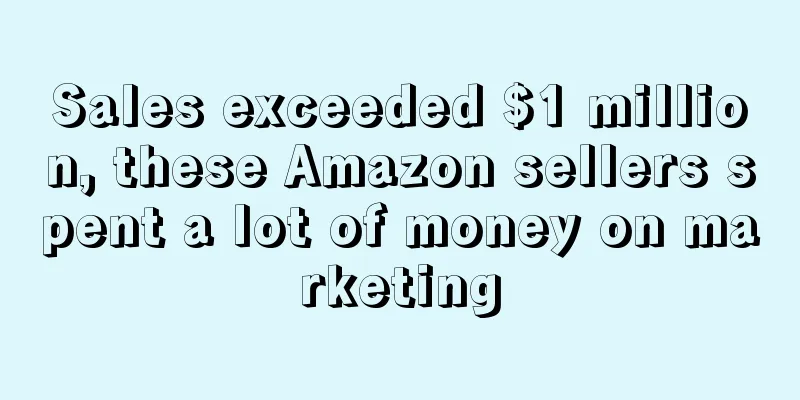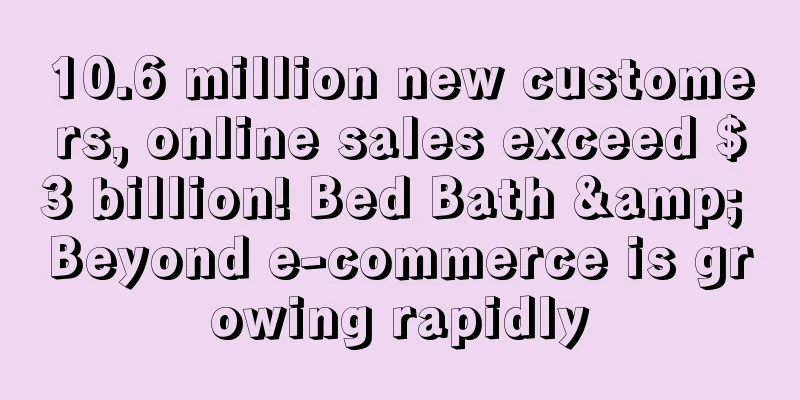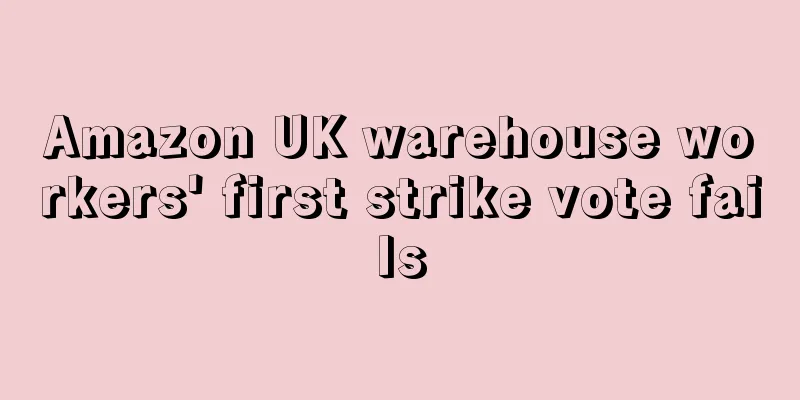Sales exceeded $1 million, these Amazon sellers spent a lot of money on marketing

|
Not only are shoppers spending more money on Amazon today , but three-quarters of sellers are also spending more on advertising on Amazon .
As the Financial Times reported, increased marketing spending by sellers helped Amazon's advertising business generate $21 billion in revenue in 2020 , a 47% year-over-year increase. That money has made Amazon a top competitor in the digital advertising space, getting closer to industry leaders Google and Facebook.
How fast is Amazon’s advertising business growing , and why is demand for Amazon advertising growing among third-party sellers? Jungle Scout’s data on sellers highlights these trends.
75% of Amazon sellers use PPC advertising
Pay-per-click (PPC) advertising is a marketing method for Amazon sellers that can also bring considerable profits to the platform. Sellers pay for these ads on a per-click basis, and the ads appear at the top of Amazon product search results, on detail pages of competing products, and even on other websites. Compared with natural search results, they have a prominent position on the page.
PPC is the most common sales method used by FBA sellers . In a survey of Amazon sellers, three-quarters of sellers use at least one form of Amazon PPC, and many sellers choose multiple forms.
Amazon offers three types of PPC advertising, depending on where you want your ads to appear on Amazon or other websites. Among the 75% of sellers who use Amazon PPC :
—— 88% of sellers use Sponsored Products —— 43% of sellers use Sponsored Brands —— 32% of sellers use Sponsored Display
On the other hand, if a seller doesn’t use PPC, chances are they don’t advertise their products at all. Of the 25% of Amazon sellers who don’t advertise PPC, a small percentage advertise on Facebook and Youtube, but the majority of sellers (78%) say they don’t sell their products on or outside of Amazon .
That said, only 19% of Amazon sellers choose not to promote their products.
Does PPC Benefit Amazon Sellers ?
Amazon’s PPC pricing structure makes the advertising business interesting. These CPCs are not fixed, but fluctuate based on an auction system where sponsored ad placements go to the seller with the highest bid .
Sellers are advised to keep PPC bids to no more than 2.5% of the product’s selling price, but this is not always feasible in a competitive product market . So while some PPC bids equate to 1 cent, others can reach several dollars per click, sometimes as high as $49, like the Sponsored Brands bid for wireless headphones .
Fortunately, sellers ’ investment in PPC pays off. Sellers who use PPC are more likely to be profitable than those who don’t, and often achieve higher returns. 44% of PPC users make more than $10,000 in monthly sales, compared to only 20% of non-users. 26% of PPC users make more than $1 million in lifetime sales, compared to only 6% of non-PPC users.
Amazon is particularly popular among online shoppers, highlighting the need for sellers to increase their brand visibility on its site . In 2020, more U.S. consumers shopped on Amazon than other major retailers , including Walmart and Target .
Additionally, throughout the pandemic, consumers have become increasingly willing to shop online, a trend that shows signs of continuing even after offline stores reopen .
—— In the third quarter of 2020, 70% of American consumers shopped on Amazon ; 64 % of consumers said that when they need a product urgently, they will first check whether they can buy it on Amazon . —— 74% of consumers believe that most shopping will be done online in the future .
Given the impact PPC has on seller profitability, combined with Amazon’s ad pricing scheme and its popularity among consumers as a retailer, it’s not hard to understand how Amazon’s advertising business could earn huge revenue in 2020.
Amazon’s non- PPC advertising is also popular
Amazon also offers marketing programs for sellers beyond paid PPC. The price of participating in these programs varies—Amazon may charge a registration fee or require sellers to pay for the products it sends to reviewers. Some programs are limited to brand-registered sellers .
The percentage of Amazon sellers using Amazon’s non- PPC advertising programs are as follows:
——18% of sellers use A+ Content; 17% of sellers use the Early Reviewer Program . ——10 % of sellers use the Vine program ; 8% of sellers use Amazon video ads . 6% of sellers use Amazon Posts . 2% of sellers use Amazon Live . ——1% of sellers use Amazon Editorial Recommendations .
Amazon began to do video-based marketing in 2020 , allowing sellers to upload short videos to their product listings and broadcast them live to potential customers. Considering that 71% of online shoppers are influenced by photos or videos on product listings, Amazon's advertising business may benefit from expanded video content.
At least 23% of sellers use social media marketing
In addition to Amazon PPC, sellers are also diversifying their marketing mix to social media channels such as Facebook or Instagram. Sellers know that channels outside of Amazon are also important. After all, 57% of US consumers say they have purchased a product online that they initially learned about through social media.
The percentage of Amazon sellers marketing through the top social media platforms is as follows:
——23% of sellers market through Facebook ; 13% of sellers market through Instagram . 4% of sellers market through Pinterest . ——2% of sellers market through Tik Tok ; ——4% of sellers market through Youtube (general) ; ——3% of sellers market through My own Youtube channel .
While Amazon’s advertising business doesn’t allow sellers to profit directly from ad spending on other sites, marketing outside of Amazon is attracting more and more consumers.
Advertising is a challenge and a top priority for sellers.
The more sellers there are on Amazon, the more intense the competition becomes. Sellers need to optimize their marketing strategies. For sellers, simply providing excellent products may not be enough. They need to attract as many people as possible to pay attention to their products in order to stand out from many competing products.
PPC advertising is a popular method, but among sellers who use Amazon PPC, 51% say it is difficult to manage. To some sellers, PPC seems very complicated and may require a professional person or team to master.
Challenges aside, many sellers in the growing e-commerce industry strive to make their products highly visible to consumers.
32% of sellers said that using PPC effectively has boosted their business. 43% of sellers are currently working on testing PPC ads. 34% of sellers plan to increase strategic advertising spend, including PPC, in 2021. 32% of sellers plan to expand brand awareness through social media, influencer marketing, and other marketing methods.
Online shopping, especially on Amazon, is likely to continue. With more new entrants, competition for Amazon sellers is fierce, and more sellers are expected to compete for advertising space in the coming years.
Consumer preference for Amazon, the effectiveness of PPC, and Amazon's continued expansion of non-PPC advertising programs all bode well for growth in its advertising business in 2021. Amazon Advertising Marketing |
>>: American consumers' interest in luxury goods is rising! Young people are the main consumers
Recommend
What is ADSMBeverlyHills? ADSMBeverlyHills Review, Features
ADSMBeverlyHills is a reputable skincare brand tha...
What is Request a Review? Request a Review Review, Features
Request a Review is a new feature launched by Amaz...
What is tinmi-arts-diamond-painting? tinmi-arts-diamond-painting Review, Features
Tinmi-Arts-Diamond-Painting is a US owned company...
What is Million Payment? Million Payment Review, Features
Baiwan Payment is a global electronic payment sol...
The storm escalates again! Hundreds of sellers "besiege" Temu headquarters to defend their rights
As competition in the cross-border e-commerce ind...
While India’s neighbors are expressing emergency, Europe is beginning to lift the ban!
India has been struggling with the outbreak recen...
Online spending surges, UK e-commerce job vacancies hit record high
The UK’s online consumption boom has triggered a ...
What is Zhonglian Global? Zhonglian Global Review, Features
Zhonglian Global (Shenzhen Zhonglian Global Supply...
During the epidemic, the United States spent $1.7 trillion online, and three major categories accounted for more than 40%
During the epidemic, offline consumption was rest...
U.S. footwear sales to reach $100 billion this year
According to the monthly report of the U.S. Burea...
Clothing sales fell nearly 400% in 2020
Since the outbreak of the COVID-19 pandemic, shop...
What is RevolutionParts? RevolutionParts Review, Features
RevolutionParts is an e-commerce platform for aut...
Etsy transaction fees to increase in April
Etsy announced that the Etsy transaction fee will...
Amazon and Etsy sellers risk misusing images
Overseas countries have been cracking down on var...
What is Chains? Chains Review, Features
Chains has a long and renowned history as a practi...









